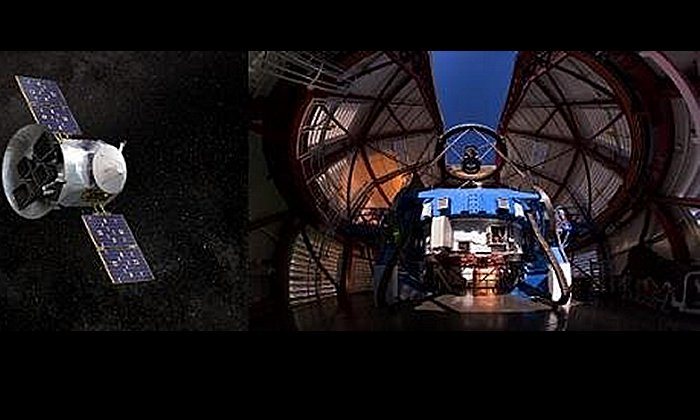Eddie Gonzales Jr. – MessageToEagle.com – A Carnegie-led survey of exoplanet candidates identified by NASA’s Transiting Exoplanets Satellite Survey (TESS) is laying the groundwork to help astronomers understand how the Milky Way’s most common planets formed and evolved, and determine why our solar system’s pattern of planetary orbits and sizes is so unusual.
Carnegie’s Johanna Teske, Tsinghua University’s Sharon Wang (formerly of Carnegie), and Angie Wolfgang (formerly of Penn State University and now at SiteZeus), headed up the Magellan-TESS Survey (MTS), which is halfway through its three-year planned duration. Their mid-survey findings, in collaboration with a large, international group of researchers, will be published in the Astrophysical Journal Supplement Series.
NASA’s Kepler Mission revealed that our galaxy is teeming with planets—discovering thousands of confirmed worlds and predicting that billions more exist. One of the surprises contained in this bounty is that exoplanets between the size of Earth and Neptune are the most common discovered so far, despite the fact that none exist in our own solar system. These “in between” planets appear to come in two distinct sizes—roughly one to 1.7 (super-Earths) and roughly two to three (mini-Neptunes) times the size of the Earth—indicating different gas content in their compositions.
“We want to understand whether super-Earths and mini-Neptunes were distinct from their earliest origins, or whether some aspect of their evolution made them deviate from each other,” Teske explained. “In a sense, we are hoping to probe the nature-nurture question for the galaxy’s most common exoplanets—were these planets born differently, or did they diverge due to their environment? Or is it something in between?”
The survey is using TESS data and observations from the Magellan telescopes at Carnegie’s Las Campanas Observatory in Chile to study a selection of 30 small, relatively short-period planet candidates. The TESS data show dips in brightness when an object passes in front of its host star. The amount of dimming allows the survey team to measure the radius of a planet candidate. This information is combined with observations gathered by the Planet Finder Spectrograph at Las Campanas that works by using a technique called the radial velocity method, which is currently the most common way for astronomers to measure the masses of individual planets.
The Magellan-TESS survey team is interested in the interplay between key variables that could help astronomers better characterize the formation pathways of super-Earth and mini-Neptune planets. They are looking for trends in the relationships between a planet’s mass and its radius; the properties of its host star, including composition and the amount of energy it radiates onto the planet; and the architecture of the planetary system of which it the planet a member.
“The underlying relationship between radius and mass for these small planets is crucial to figuring out their general compositions, via their overall density, as well as how much variation there is in their compositions,” explained Wolfgang. “Quantifying this relation will help us discern whether there is one formation pathway or multiple avenues.”
What sets this survey apart from prior work is its scope—the team designed the survey from the start to try to account for biases that could skew how the results are interpreted in a broader context. Their goal is to be able to draw robust conclusions about super-Earths and mini-Neptune planets as a population, versus just a collection of 30 individual objects.
The mid-survey findings, which represent a significant contribution to the number of small planets with known masses and radii, already hint at evidence for small observational selection biases that may have affected scientists’ work on mass measurements. The MTS could thus provide an important framework for future radial velocity studies of transiting planets.
Looking forward, the next half of the survey will focus on completing the sample—this paper contains 22 of the planned 30 candidates—as well as continuing to monitor all the systems for longer-period planets not detected by TESS to probe system architectures. Checking the influence of the host star composition is another next step, since past work has suggested that the compositions of planets may be related to those of the stars they orbit.
“We hope that gaining this multidimensional understanding will significantly improve our knowledge of exoplanet evolution, and perhaps explain why our own solar system seems unusual,” Wang concluded.
Written by Eddie Gonzales Jr. MessageToEagle.com Staff







